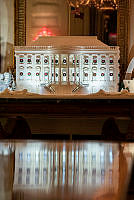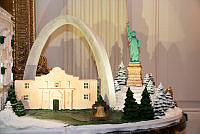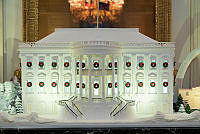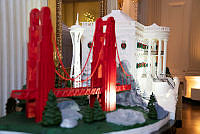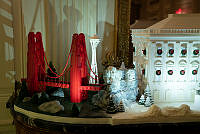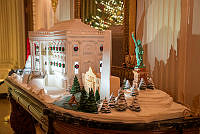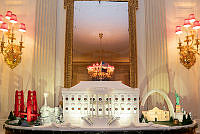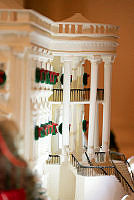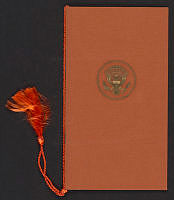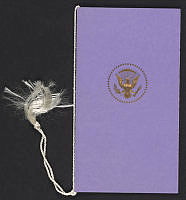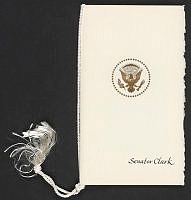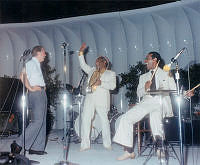Rubenstein Center Scholarship
April 6, 1917

Woodrow Wilson Addresses Congress. His speech before Congress on April 2, 1917, led to a Declaration of War against Germany.
Library of CongressAt eight o’clock on the morning of April 2, 1917, President Woodrow Wilson and his wife Edith “threw responsibilities to the winds for a few hours,” boarding their limousine at the White House and riding to a local club where they played golf for a few hours before returning to Washington, D.C. Grave events were afoot there, thanks to Germany’s recent decision to resume unrestricted submarine warfare—including against then-neutral American ships bound for Europe—and the Zimmermann telegram from the German foreign minister encouraging Mexico to declare war against the United States. By the beginning of April, American intervention in World War I seemed inevitable. Wilson confirmed it on the evening of April 2 by going to the Capitol with his wife, daughter Margaret and secretary Helen Woodrow Bones and delivering a speech to Congress.1
“I advise that the Congress declare the recent course of the Imperial German Government to be in fact nothing less than war against the Government of the United States,” he said; “that it formally accept the status of belligerent which has thus been thrust upon it; and that it take immediate steps not only to put the country in a more thorough state of defense, but also to exert all its power and employ all its resources to bring the Government of the German Empire to terms and end the war.”
After summarizing the events that had led to war, and asking Congress to raise funds for the conflict ahead and impose a draft, the President concluded: “The world must be made safe for democracy. Its peace must be planted upon the tested foundations of political liberty. We have no selfish ends to serve. We desire no conquest, no dominion. We seek no indemnities for ourselves, no material compensation for the sacrifices we shall freely make. We are but one of the champions of the rights of mankind. We shall be satisfied when those rights have been made as secure as the faith and the freedom of nations can make them.”2

A man buys a copy of The Evening Star from a newsboy in Washington, D.C., on April 7, 1917, as a headline announces the Declaration of War against Germany.
Library of CongressA resolution for a declaration of war against Germany was introduced in both houses of Congress, and debate began on April 4. Support for the resolution was not unanimous, with Republican Senator Robert M. La Follette of Wisconsin, whose constituents included many German-Americans, being among the most vociferous opponents. The Senate nevertheless passed the resolution on April 4 by a vote of 82 to 6. The House of Representatives spent the whole of the next day and evening debating the resolution before finally passing it at 3:12 a.m. on April 6 by a vote of 373 to 50.3
The Clerk of the House of Representatives carried the resolution to the Senate just before noon on April 6, and presented it to Vice President Thomas R. Marshall. As he signed “there was a long sigh” as “those in the galleries and on the floor squirmed for a better chance to see history in the making.” Afterwards “there was a wild scramble in the press gallery as newspaper men dashed for the wires with the word of a nation going to war.” The signed paper was then sent to the office of the secretary of the senate where it was sealed and tied with red tape before being rushed off to the White House by a bicycle messenger. The president and first lady had been out for a walk while the drama at the Capitol was occurring, but they were back to receive it at the White House by 1:00 p.m.4
The actual signing was anticlimactic. After returning from their walk, the president and first lady found Helen Bones waiting for them on the White House veranda with Executive Clerk Rudolph Forster (who would remain in office through the administration of Franklin Delano Roosevelt) standing by the door. Inside, President Wilson received the resolution from Chief Usher Irwin “Ike” Hoover (who also would serve until the beginning of the Roosevelt administration), and then stepped into Hoover’s office off the main entrance corridor. The president sat down at Hoover’s desk, borrowed Edith’s gold pen, and signed the document without comment in the presence of just those four individuals. It was 1:18 p.m.5
Signals went out immediately to American land and naval forces: The United States had entered the First World War.





